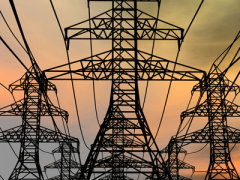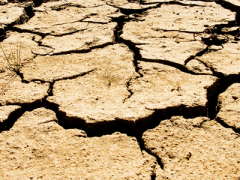Two-thirds of major emitting countries still not on track to reach Paris climate proposals
In the Paris Climate Agreement, which went into effect on 4 November 2016, countries promised to implement policies to reduce their greenhouse gas emissions. A report by NewClimate Institute, PBL Netherlands Environmental Assessment Agency and the International Institute for Applied Systems Analysis (IIASA) provides an overview of projected greenhouse gas emissions in 25 major emitting countries up to 2030, based on currently implemented climate policies and the implementation of nationally determined contributions (NDCs). The report concludes that 16 out of the 25 countries and regions analysed are still not on track to achieve the NDC targets they have set for themselves. This report updates the 2017 report.
Not all countries on track to achieve targets set in NDCs
The 2018 update takes into account policy developments since the 2017 report and latest historical greenhouse gas emissions data. Similar to last year’s report, this year’s update shows that of the 25 countries studied here, seven are roughly on track to achieve their self-determined unconditional 2025 and/or 2030 targets with implemented policies. These include China, Colombia, India, the Russian Federation, Saudi Arabia (new, compared to our 2017 report), Turkey, and the Ukraine. For the EU28 and Mexico, the achievement of 2030 targets was found to be uncertain with implemented policies.
The other 16 (Argentina, Australia, Brazil (new, compared to our 2017 report), Canada, Chile, Democratic Republic of the Congo, Ethiopia, Indonesia, Japan (new), Kazakhstan, Morocco, Republic of Korea, South Africa, Thailand, the Philippines, and the United States) would require additional measures to achieve their 2025/2030 targets.
It should be noted that a country likely to meet its targets not necessarily is undertaking more stringent action on mitigation than a country that is not on track, as this depends on the ambition level of the nationally determined target, and because countries have different policy-making approaches.
Progress on reducing greenhouse gas emissions also varies
Currently implemented policies are projected to influence greenhouse gas emissions, but do not prevent emissions from increasing up to 2030 (above 2010 levels). This is the case, not only in developing countries (Argentina, Brazil, China, DRC, Ethiopia, India, Indonesia, Kazakhstan, Morocco, the Philippines, Russia, Saudi Arabia, South Africa, and Thailand) but also in OECD countries (Chile, Mexico, Republic of Korea, and Turkey) up to 2030, compared to 2010 levels.
Greenhouse gas emissions in the remaining seven countries are projected to remain stable, approximately at current levels, or to decrease further, under current policies.
Changes since the Paris Agreement was adopted
The report also assessed how countries’ current policies scenario projections have changed since 2015, when the Paris Agreement was adopted. The comparison with our 2015 report, which covered thirteen countries, shows that only six countries (Australia, Canada, China, EU, Turkey and the United States) show lower emissions projections for 2030; for the remaining seven countries (Brazil, India, Indonesia, Japan, Mexico, Republic of Korea, Russia) the projections were either similar or even higher.
Still more effort needed to stay well below 2 °C
Even if all the countries’ targets would be fully met, the combined mitigation impact would fall far short of what is required to limit global warming to well below 2 °C and possibly 1.5 °C — the climate targets set in the Paris Agreement. Previous studies have shown that, even with full implementation of all the plans countries submitted in this agreement, global temperature would rise by 2.6 °C to 3.1 °C, by the end of the century.
In order to limit global warming to 'well below' 2 °C, more stringent climate policies will be necessary.




